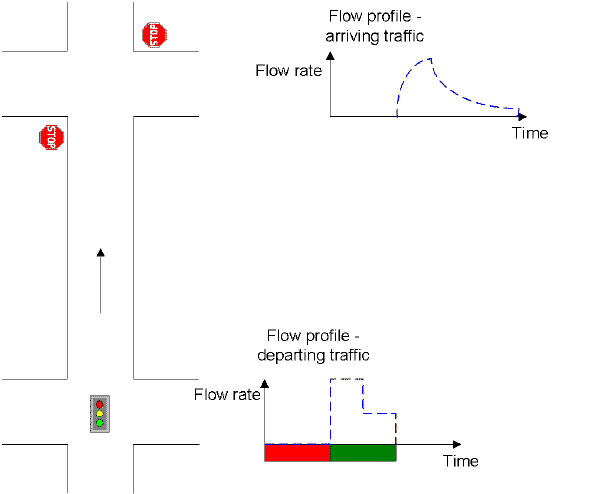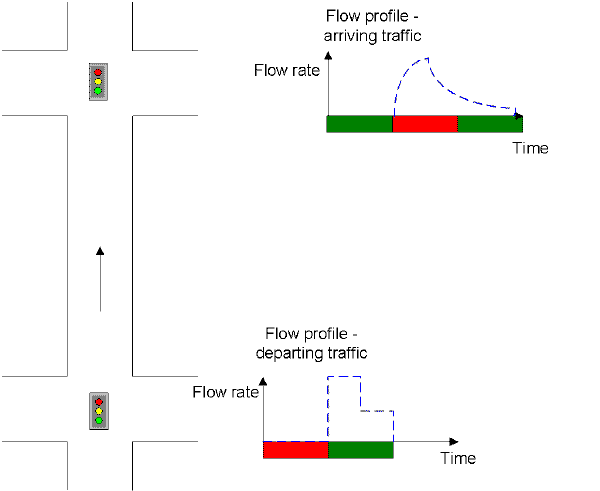|
A platoon is a group of vehicles or pedestrians traveling together as a group, either voluntarily or involuntarily because of signal control, geometrics, or other factors. When a platoon arrives at either a TWSC intersection or a signalized intersection, it often affects the capacity or the delay at the intersection. For TWSC intersections, this condition occurs when a traffic signal is located upstream. The figure below shows a well structured platoon leaving the signalized intersection and arriving somewhat dispersed, but still with some structure, at the downstream TWSC intersection. The result, at the TWSC intersection, is that the minor street approaches have access to larger gaps that can be effectively used by the minor street vehicles. This condition results in a minor street capacity that is larger than if the vehicles simply arrived randomly at the intersection.
For signalized intersections, the effect of arrival patterns is seen in the delay forecasts produced by the HCM model. The two figures below illustrate how the arrival pattern directly affects delay. The top figure shows the platoon arriving primarily during the green phase, while the bottom figure shows the platoon arriving primarily during the red phase. Clearly, the delay in the top figure is lower than the delay for the bottom figure.
|


